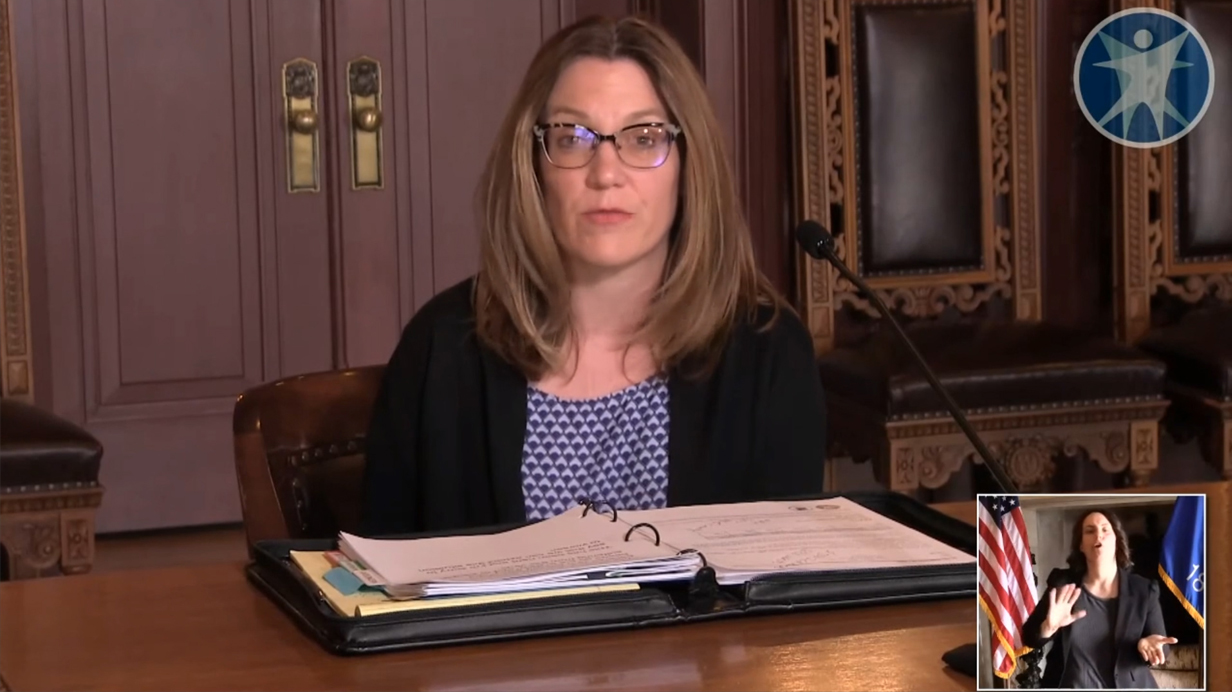
Evers issues month-long shelter in place to flatten the curve
MacIver News Service | Mar. 24, 2020
The Evers Administration will be imposing a shelter-in-place order called “Stay-At-Home” starting at 8 am on Wednesday, Mar 25th through April 24th, warning the Coronavirus pandemic in Wisconsin threatens to overwhelm the state’s healthcare capabilities.
Secretary-Designee Andrea Palm warns that on our current path, 22,000 people will catch the virus within the next two weeks and anywhere between 440 – 1,500 people will die. Right now, as of Mar. 24th, only 441 people have Coronavirus and 5 have died.
.@DHSWI Secretary-Designee Andrea Palm warns 1,500 Wisconsinites could die of #coronavirus in next two weeks – up from 5 deaths currently. 4,800% increase in new cases. #WIright @VickiMcKenna @DanODonnellShow @MarkBellingShow @JayWeber3 @Dailytakes pic.twitter.com/s8lMBc4r7m
— MacIver News Service (@NewsMacIver) March 24, 2020
It’s unclear how many of the 441 people currently diagnosed have been hospitalized. Dr. Ryan Westergaard, Bureau of Communicable Diseases, corrected himself from yesterday when he said 10 percent of individuals with Coronavirus are hospitalized. He now believes the number is 20 percent, and said the state is trying to develop a way to get more accurate and up-to-date information.
Secretary-Designee Andrea Palm warns that on our current path, 22,000 people will catch the virus within the next two weeks and anywhere between 440 – 1,500 people will die.
It’s also unclear what Evers’ “Stay-At-Home” order means or who it applies to. The Wisconsin Economic Development Corporation (WEDC) maintains the list of exemptions which broadly includes: healthcare and public health operations, human service operations, essential infrastructure, essential government functions, cyber security, stores that sell groceries or medicine, food and beverage production and agriculture, restaurants and bars (for carryout orders), childcare settings, charities, weddings and funerals, media, gas stations and businesses needed for transportation, financial institutions, hardware and supply stores, tradesmen, postal and shipping services, laundry services, office supply stores, supplies for essential operations, transportation, home-based care, professional services, factories, warehouses, labor unions, hotels, and higher education institutions.
“It’s an expansive list,” Evers admitted. “If we were to just think of the agriculture industry, for example. Obviously, our farmers are the linchpin of that, but there’s a supply chain that keeps that farmer in business, and so there’s all sorts of people that supply goods and services to that farm so that he or she can provide that product for the market.”
The restrictions on individuals are much more draconian.
“All public and private gatherings of any number of people that are not part of a single household or living unit are prohibited, except for the limited purposes expressly permitted in this Order,” the order states.
Secretary-Designee Palm said people should only interact with five people – not five people at a time; five people total.
This new month-long order comes at a time when Wisconsin is seeing encouraging signs that current control measures are working.
On Sunday, only 9 counties reported new cases compared to 18 counties on Friday. Many counties with cases appeared to have them under control. Wood County, for example, had gone a week since its first and only case. Brown, Eau Claire, and Rock Counties had made it a full day without a new case.
On Monday, the situation looked even better. For the first time in 8 days, it had fewer new cases than the day before. On Monday there were 35 new cases, compared to 100 new cases the day before. It was the first day in a week that Dane County had no new cases.
For the second day in a row, #Milwaukee County has had fewer new #coronavirus than the day before. #WIright @DanODonnellShow @ChrisAbeleMKE pic.twitter.com/oWEuY9eAzy
— MacIver Institute (@MacIverWisc) March 24, 2020
There was a slight bounce on Tuesday, when there were 41 new cases. That was, in part, because there were 400 more tests processed than the day before. However, the percent of positive tests dropped from 4.1% to 3.4%. Milwaukee only had 15 new cases, down from 22 the day before, and 56 the day before that.
MNS will continue to post updates to this rapidly developing story.